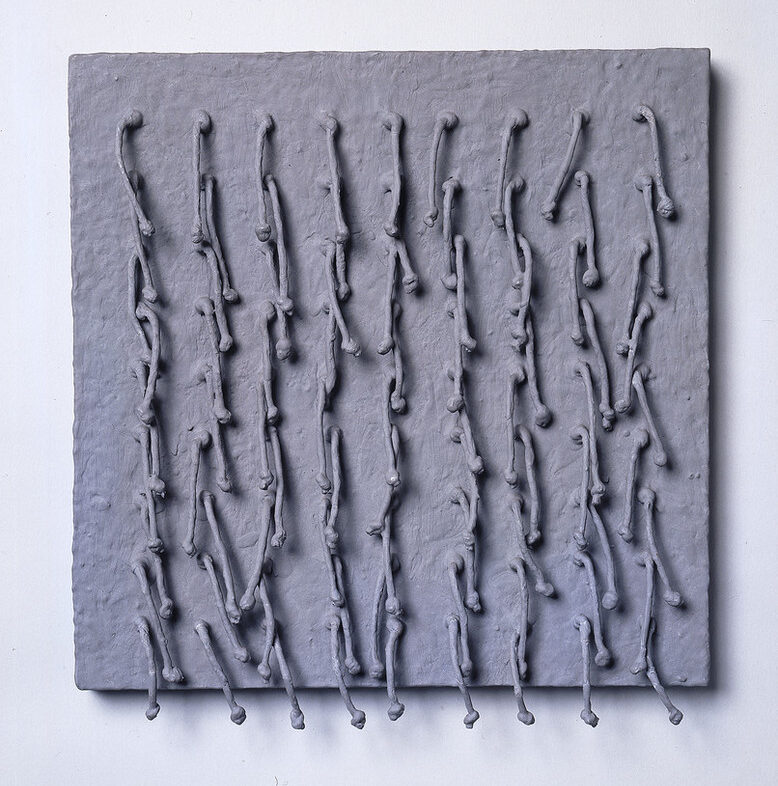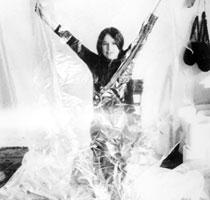Study for Sculpture
Close up of Study for Sculpture


In her abstract sculptures, Eva Hesse modified the precision of 1960s Minimalism to emphasize the expressive and experimental essences of creativity. Hesse’s exploratory approach foreshadowed the multitude of processes and materials that characterize sculpture in our post-modern period. Hesse mined contradictions, developing sculptures that are simultaneously hard and soft, precise and irregular, solid and open, and intellectual and erotic. Her works often relate to the human body, and many are imbued with erotic undercurrents.
Study for Sculpture comprises a clear 9-x-9 grid, but the knotted cords hang in random positions. Hesse contrasted the tightness of the knots at the ends of the cords with the limpness of the cords themselves. Light and shadow play an important role in this work, as does the use of gravity as a shaping force.

